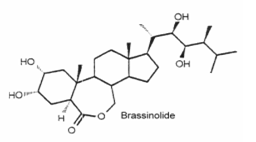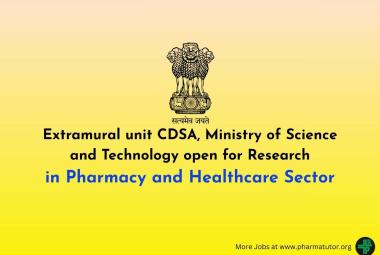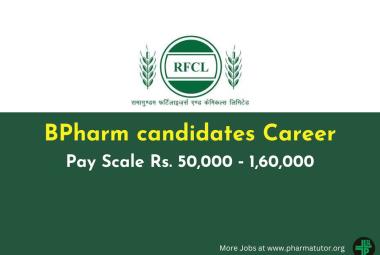 ABOUT AUTHORS:
ABOUT AUTHORS:
Lohithasu Duppala*, Santhosh naidu Matsa, Manikumar Kothakota,
GITAM Institute of Pharmacy, GITAM University, visakhapatnam, Andhra Pradesh, India-530045.
lohithasu@gmail.com, +91-9491894432
ABSTRACT:
Generally, almost all communication in higher plants was thought to be mediated by the five classes of classical plant hormones i.e. auxins, cytokinins, gibberellins, abscisic acid and ethylene. The plant hormone action thus appeared to be basically different from that in animals. This article discusses the general role for new generation of plant hormones includes Brassinosteriods, Salicylic acid. Peptides,Polyaminesand Jasmonates.
[adsense:336x280:8701650588]
REFERENCE ID: PHARMATUTOR-ART-1687
INTRODUCTION:
Plant Hormones(Plant growth regulators):
These are small organic substances, which are synthesized in minute quantities by specific plant cells/tissues (one part of plant body) and transported to another part where they influence specific physiologic processes(promote or inhibit growth and development), active in low concentration. Hormones are synthesized or stored in regions of transduction. Hormones travel within phloem or from cell to cell after reception of appropriate stimulus. The term HORMONE was first used by Starling in 1906s.
Plant hormones-categories:
Based on function or chemical structure ,they can categorized into
1.Auxins- Natural (Indole -3-acetic acid) ;Synthetic (Indole -3-butyric acid, 2-methyl-4-chlorophenoxy acetic acid, Indole -3-propionicacid,2,4-dichlorophenoxy acetic acid)
2.Gibberllins-GA1 …..GAn in order of discovery
3.Cytokinins- kinetin, Zeatin, dihydrozeatin ,tricanthene, isopentenyl adenine etc.,
4.Growth inhibitors- Ethylene ,Abscisic acid(stress hormone) ,Chlorochine chloride, Morphactins, Maleic hydrazide
5.Other new generations- Brassinosteriods ,Salicylic acid,Peptides,Polyamines,Jasmonates and others.
- Brassinosteriods
- Salicylic acid
- Peptides
- Polyamines
- Jasmonates
1.Brassinosteriods :

Brassinolide structure
- Chemically similar to animal steroid hormones.In contrast to animal steroid signal molecules,Brassinosteriods are perceived by a plasma memberane localized receptor kinase.These are the polyhydrxylated steroid hormones of plants. Studied in Arabidopsis.Brassinolide, is the most bio-active form from 70 naturally occurring Brassinosteriods.
- Brassinolide was the first isolated brassinosteroid , when pollen from Brassica napus .The Brassinosteroids , biosynthesised from campesterol. Brassinosteroids are recognized at the cell membrane, although they are membrane-soluble.1,2
- Extract from the plant Lychnis viscaria contains a relatively high amount of Brassinosteroids. Lychnis viscaria increases the disease resistance of surrounding plants.
- Brassinosteroids have been reported to counteract both abiotic and biotic stress in plants. Brassinosteroids increased tolerance to high temperature in Brassica juncea L.
- These were first isolated from pollen of the mustard family and extensively.Over 70 naturally occurring Brassinosteriods are known.Effective at low concentrations.
Brassinosteriods stimulate3-12
- Cell division ,stem elongation and cell elongation .
- Cell wall loosening and cell wall regeneration.
- Differentiation of xylem tissues and inhibit leaf abscission.
- Plants found deficient in Brassinosteriods suffer from Dwarfism.
- Regulate the growth and differentiation of plants throught their life cycle
- Promotion of Vascular differentiation.
- some protection to plants during chilling and drought stress.
- Ethylene biosynthesis.
- Required for fertility-Is necessary for pollen elongation for pollen tube formation.
- Inhibit root development and growth.
[adsense:468x15:2204050025]
2.Salicylic Acid:

Salicylicacid structure
· Salicylic acid, synthesized from phenylalanine. It is a monohydroxybenzoic acid, a type of phenolic acid and a beta hydroxy acid. It is found in plants with roles in plant growth and development, photosynthesis, transpiration, ion uptake and transport13.
· Promotes production of pathogenesis related proteins.
· Can reverse effects of ABA in some cases. SA also induces specific changes in leaf anatomy and chloroplast structure. SA is involved in endogenous signaling, mediating in plant defense against pathogens.
NOW YOU CAN ALSO PUBLISH YOUR ARTICLE ONLINE.
SUBMIT YOUR ARTICLE/PROJECT AT articles@pharmatutor.org
Subscribe to Pharmatutor Alerts by Email
FIND OUT MORE ARTICLES AT OUR DATABASE
3.Signaling Peptides14-18:
- These are small molecules that can be transported throughout the plant and effect development and involved in defense response.These are involved in self-incompatibilityand helps to determine cell fate.
- Involved in nodule formation in legumes.These are also involved in wound signal transduction, in cell proliferation, and in the regulation of salt/water homeostasis.
Eg: Systemin , Rapid Alkalinization Factor , enod40,Polaris , Phytosulfokines ,natriuretic peptides etc.,
4.Polyamines19-20:

Spermidine structure Putrescine structure
- These are mostly aliphatic amines,having two or more primary amino groups –NH2.
- These are ubiquitous in living organisms and have been implicated in a wide range of biological processes, including plant growth, development and response to stress.
- These are involved in somatic embryogenesis ,stem elongation and flowering,root growth,tuber development ,fruit ripening ,abiotic stresses .These are also involved DNA replication, transcription of genes, cell division, organ development, fruit development and ripening, leaf senescence and abiotic stresses.These are ffective at low concentrations.Mutants have abberant development
Eg: Putrescine, spermidine and spermine are most common.
5.Jasmonates:

Methyl jasmonate structure
- Jasmonic acid is most common of Jasmonate.
- These are methyl esters,Scented
Jasmonate function
- Induce tuberization
- Important in plant defense
- Inhibit growth
- Inhibit germination
- Promote senescence
- Promote pigmentation
REFERENCES:
1.Grove, Michael D.; Spencer, Gayland F.; Rohwedder, William K.; Mandava, Nagabhushanam; Worley, Joseph F.; Warthen, J. David; Steffens, George L.; Flippen-Anderson, Judith L. et al. (1979). "Brassinolide, a plant growth-promoting steroid isolated from Brassica napus pollen". Nature 281 (5728): 216-217. .
2.Grove, M.D.; Spencer, G.F.; Rohwedder, W.K.; Mandava, N.; Worley, J.F.; Warthen, J.D.; Ste; Flippen-Anderson, J.L. et al. (1979). "Brassins: a new family of plant hormones from rape pollen". Nature225 (5237): 1065–66.
3.Bajguz, A. (2007). "Metabolism of brassinosteroids in plants". Plant Physiology and Biochemistry 45 (2): 95–107.
4. Clouse, SD; Sasse, JM. (1998). "Brassinosteroids: Essential regulators of plant growth and development". Annu. Rev. Plant Physiol. Plant Mol. Biol. 49: 427–51.
5. Li, JM; Chory, J. (1997). "A putative leucine rich repeat receptor kinase involved in brassinosteroid signal transduction". Cell 90 (5): 929–38.
6. Nemhauser, Jennifer L.; Mockler, Todd C.; Chory, Joanne (2004). "Interdependency of Brassinosteroid and Auxin Signaling in Arabidopsis". PLoS Biology 2 (9): 258.
7. Caño-Delgado, A; Yin, Y; Yu, C; Vafeados, D; Mora-Garcia, S; Cheng, JC; Nam, KH; Li, J et al. (2004). "BRL1 and BRL3 are novel brassinosteroid receptors that function in vascular differentiation in Arabidopsis". Development (Cambridge, England) 131 (21): 5341–51.
8.Hewitt, FR; Hough, T; O'Neill, P; Sasse, JM; Williams, EG; Rowan, KS (1985). "Effect of brassinolide and other growth regulators on the germination and growth of pollen tubes of "Prunus avium" using a multiple hanging drop assay". Aust. J Plant Physiol 12 (2): 201–11.
9. Sondhi, N.; Bhardwaj, R.; Kaur, S.; Singh, B.; Kumar, N. (2008). "Isolation of 24-epibrassinolide from leaves of "Aegle marmelos" and evaluation of its antigenotoxicity potential employing Allium cepachromosomal aberration assay". Plant Growth Regul 54 (3): 217–224.
10. Sharma, P.; Bhardwaj, R. (2007). "Effects of 24-Epibrassinolide on growth and metal uptake in "Brassica juncea" L. under copper metal stress". Acta Physiologiae Plantarum 29 (3): 259–263.
11. Sharma, P; Bhardwaj, R; Arora, HK; Arora, N; Kumar, A. (2008). "Effects of 28-homobrassinolide on nickel uptake, protein content and antioxidative defence system in "Brassica juncea". Biol. Plant 52(4): 767–770..
12.Xiao Jian, Xia; Zhang, Y; Wu, JX; Wang, JT; Zhou, YH; Shi, K; Yu, YL; Yu, JQ (2009). "Brassinosteroids Promote Metabolism of Pesticides in Cucumber". J. Agric. Food Chem. 57 (18): 8406–8413.
13. Hayat, S. and Ahmad, A. (2007). Salicylic acid – A Plant Hormone. Springer. ISBN 1-4020-5183-2.
14.Matsubayashi Y, Sakagami Y (May 2000). "120- and 160-kDa receptors for endogenous mitogenic peptide, phytosulfokine-alpha, in rice plasma membranes". J. Biol. Chem. 275 (20): 15520–5.
15.Topping JF, Lindsey K (October 1997). "Promoter trap markers differentiate structural and positional components of polar development in Arabidopsis". Plant Cell 9 (10): 1713–25.
16.Pearce G, Moura DS, Stratmann J, Ryan CA (October 2001). "RALF, a 5-kDa ubiquitous polypeptide in plants, arrests root growth and development". Proc. Natl. Acad. Sci. U.S.A. 98 (22): 12843–7.
17.Scheer JM, Pearce G, Ryan CA (July 2005). "LeRALF, a plant peptide that regulates root growth and development, specifically binds to 25 and 120 kDa cell surface membrane proteins of Lycopersicon peruvianum". Planta 221 (5): 667–74.
18. Andreas schaller -bioactive peptides as signal molecules in plant defense, growth, and development- institute of plant sciences, federal institute of technology zürich, ch-8092 zürich, switzerland, atta-ur-rahman (ed.) studies in natural products chemistry, vol. 25,367-411.
19.Smith T A 1985a Polyamines; Annu Rev. Plant Physiol. 36 117–143
20.Smith T A 1985b The inhibition and activation of polyamine oxidase from oat seedlings; J. Plant Growth Regul. 3 269–275
NOW YOU CAN ALSO PUBLISH YOUR ARTICLE ONLINE.
SUBMIT YOUR ARTICLE/PROJECT AT articles@pharmatutor.org
Subscribe to Pharmatutor Alerts by Email
FIND OUT MORE ARTICLES AT OUR DATABASE









